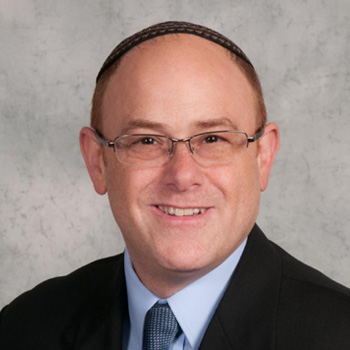
Jul 2, 2014 | Pillar Pesach 2014
When I was young, I looked forward to Pesach because it was when everyone in the family would get together for our Seder. My grandfather sat at the head of the table and my grandmother never sat at all. The hustle and bustle would settle down for a few minutes when we asked the Ma Nishtana and again when we drank the four cups, ate the Matza and searched for the Afikoman. We also grew up testing our manliness by trying to eat the “real” Chrain (maror) without crying. Of course there was Afikoman negotiations and presents as well. I am sure that each of us has our favourite Pesach memories from our childhood.
Now that I am the one sitting at the head of the table, I do my best to give my children and my grandson similar memories. This is what Pesach is all about. It’s about family and tradition. This is recognized in the Haggada with the story of the four different sons who attend the Seder. The simple son, the wise son, the wicked son and the one who doesn’t even know where to begin.
No matter what type of life a child leads, family is family and they always have a place at the table. What a beautiful message about how a family should function. Many years ago when a child would “marry-out,” the parents would sit Shiva. This always disturbed me because even if a child does take that extreme step, family is family and we need to love our children unconditionally.
As we begin Pesach, I want to wish everyone a Chag Sameach with best wishes for a wonderful stress free (is this possible) holiday surrounded by family and good friends.
Chag Sameach!
Rabbi Boruch Perton

Mar 30, 2014 | Pillar Pesach 2014
Fellow congregants
As we approach the final stages of a long, cold, snowy and very difficult winter we greet spring with great optimism and vigour at Beth Zion. Rabbi Perton, Rabbi Emeritus Shoham and our Executive Director, Eileen Rabinovitch have been busy planning events, programs, classes and lectures for the upcoming year which we are proud to offer to our members and the community at large.
Our esteemed Rabbi Shoham will be giving a series of lectures. Rabbi Perton will be conducting classes on some very interesting topics. Back by popular demand is our “Scotch Tasting Evening” and “Cantorial Concert”, to just mention a few.
For Ha’atzmaut our guest lecturer will be Rabbi Yehoshua Grunstein from Israel, and for Shavuot our guest scholar in residence will be Dr. Lawrence Shiffman from the Yeshiva University. Our guest Chazzan for the High Holidays will again be Cantor Yechezkel Klang from Israel.
Kudos to our Executive Director, Eileen Rabinovitch for her skillful and fervent energy in planning our special events and persevering to make them happen. Thank you as well to her staff for their dedication and hard work.
A special Yasher Koach goes to Reverend Rosenberg who was instrumental in keeping a second daily Minyan alive throughout this long winter. Most synagogues struggle to have one daily Minyan functioning but at Beth Zion we had two Minyanim, which made it easier and more convenient for those members saying Kaddish.
While Rabbi Perton has been our part time Rabbi for the past couple of years, he will now assume the role full time as of August 1, 2014. He is always available to discuss any concerns you might have or halachic questions or issues that you need answered.
This year’s Cantorial Concert will again take place between Rosh Hashanah and Yom Kippur. Building on its past success, this year’s version will again feature some of the most talented Chazzanim around. Those who attended last year can attest to the musical extravaganza that rocked Beth Zion. Approximately 700 people attended and did not want to leave and stop dancing. Join us this year for an even greater evening with an amazing group of performers.
By the time you read this edition of the Pillar, Purim will have passed and it is I guess coincidental that so have the Provincial elections. The significance of Purim is to remember the attempted plot of Haman to exterminate the Jews. How coincidental is it that in today’s world we are still being persecuted and attempts are being made to chase us (amongst other ethnic groups) out of Quebec.
With Passover just around the corner, we have the opportunity to celebrate and commemorate the Jews liberation from Egypt over three thousand years ago. Passover is one of my favorite holidays as the Seders bring our families, extended families and friends together to enjoy a festive meal while at the same time taking turns to read portions of the Haggadah in Hebrew and English. I would be remiss to not mention our grandchildren’s search for the Afikoman. Unfortunately at this year’s seder we will dearly miss my late mother and brother who passed away recently but my family will honor their memory by dedicating the reading of certain parts of the Haggadah.
We welcome back all of our suntanned snowbirds to Beth Zion and hopefully your winter was healthy, restful, and most enjoyable.
On behalf of my family , the Officers, Board of Directors, Clergy and office staff we wish you and yours Chag Kosher V Sameach and a healthy and Happy Pesach.
Ricky Steinberg
President
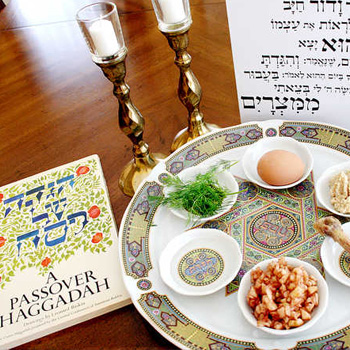
Mar 29, 2014 | Pillar Pesach 2014
THE SEARCH FOR LEAVEN
Bedikat Chometz or the search for leaven, is the ritual prescribed for the night before Passover. This year, Bedikat Chometz occurs on Sunday evening, April 13 2014. In order to be certain that the house is ready for the holiday, the head of the house searches carefully in all the rooms for any remaining leaven. Since the house has been thoroughly purged, a member of the household customarily places small pieces of bread in conspicuous places around the house. After the blessing is recited, one goes from room to room, carrying a lighted candle, a wooden spoon and a feather. The rest of the family, following, watches him sweep the bread onto the spoon with the feather. The special blessing pronounced at this time is:
“Baruch at-ta Ado-Nai, Elo-Heinu Melech ha’olom, asher kidshonu b’mitzvosav, v’tzivanu, al bi-ur chametz.”
“Blessed art thou, O, L-rd, Our G-d, King of all the Universe, who has commanded us to remove all leaven.”
After the search is completed another prayer is said:
“All manner of leaven that is in my possession which I have not seen or removed shall be null and accounted as the dust of the earth.”
All the chometz found is placed in a bag and put away until the following morning when it is burned. After the burning of the chometz, no leaven is eaten for the entire eight days of Passover.
Some Laws of Kashering on Pesach
The following is a basic outline for koshering your kitchen for Pesach. For specific Passover questions, please contact Rabbi Perton.
Kashering utensils for Pesach should preferably be completed before the fifth hour on Erev Pesach of a regular year, and on Friday in a year when Erev Pesach falls on Shabbos. Not all materials can be kashered. Vessels made of wood, stone, natural rubber and metal may be kashered. However, items made from plastic, melmac, nylon, china, earthenware, porcelain, glassware used for cooking and baking, Corningware, Corelle, Pyrex, Duralex, Formica, enamel, enamel covered pots, Teflon, and Silverstone cannot be kashered. Sieves, strainers, graters, grinders, rolling pins, kneading boards, utensils that have rust and dirt that cannot be removed or cracks, crevices and patches may not be kashered for Pesach.
The underlying principle for kashering is that the way that the prohibition was absorbed is the way that it will be removed. For example, if the vessel absorbed chometz by being cooked on a stove in a liquid, then that is the way that the vessel will expel chometz. Therefore, there are different methods of kashering vessels.
The first method which is used for pots on the fire and stirring spoons and the like is called “hagallah”, or purging through boiling.
The second method used for kashering of utensils is called “libun”, which is done on utensils which were used with fire or heat without water, i.e. spits, baking pans, etc. Libun requires one of two methods: either a thorough libun or simple libun. A thorough libun requires the heating of the vessel until it becomes red-hot, whereas simple libun requires that the heat penetrate sufficiently throughout the entire vessel. Another method of kashering utensils is for glass utensils that we use for cold items. This is done by a 72 hour immersion and refilling in regular water. For details of these methods of kashering the Rabbi should be consulted. It is preferable, when possible, to use dishes, cutlery, glasses, pots and pans that are especially set aside for Pesach which have never come in contact with chometz. However, under certain conditions, some of the utensils used throughout the year may also be used on Pesach if they are properly kashered (made kosher).
Ovens: Self-cleaning: The self-cleaning oven is relatively easy to kasher. First, clean the stove thoroughly. Second, turn the oven to self clean and set the times for a half hour longer than the oven has ever been used.
Ovens: Non-self cleaning: The oven must be cleaned thoroughly (as if you were going to resell it) including the racks, with a caustic cleaner and left for 24 hours. Then you should turn the oven to the highest setting and leave it on for approximately 1 hour.
Microwave: Do not use oven for 24 hours. Thoroughly clean all the surfaces in the oven. The insert tray should be covered with cardboard or Styrofoam. Place a utensil with water in the microwave bringing it to a boil.
Stoves: Electric: The burners should be turned on to the highest heat and left for a few minutes after they turn red.
Stoves: Gas: The grates should be cleaned and either kashered in the oven or by keeping the grate over the fire, on each side, for 10 minutes. Corning cooking range: Allow it to heat up until the entire range top is very hot.
Stove Tops: Enamel: Can not be kashered. The top should be cleaned and covered with heavy aluminum foil.
Stove Tops: Stainless Steel Top: Do not use for 24 hours, clean with a caustic cleaner and then pour boiling water from a pot or kettle over the entire area, ensuring that every part of the stove top is reached by the water.
Pans and rings made of metal: May be kashered by leaving for 24 hours and then either purged in boiling water, or kashered with the self cleaning oven.
Refrigerators and Freezers: Wash out thoroughly.
Dishwashers: Unless it is stainless steel with new racks, it should not be used on Pesach.
Broilers, Toaster Ovens, Food Processors, Mixers, Coffee Makers are very hard to kasher for Pesach. In case of great need, contact the Rabbi.
Sinks: Stainless steel: Don’t use hot for 24 hours and then kasher by pouring boiling water from a pot or kettle over every area of the surface of the sink.
Enamel: Can not be kashered. Clean them thoroughly and line with tinfoil and a sink insert.
Counter Tops: Unless stainless steel, can not be kashered and should be completely cleaned and covered (i.e. with contact paper or foil.)
Tablecloths, Dish towels: Tablecloths and dish towels that have come in contact with chometz may be used on Pesach provided they were thoroughly washed before the holiday. Starched tablecloths, however, may not be used on Pesach at all, because starch may contain flour.
The following is a partial list of those items that can be kashered for Pesach and the type of method that is used to kasher them. Pots (which were used to cook chometz in liquid) – Hagallah Spits and baking pans (which were used over the fire without liquid) – Libun gamur Frying Pans – Libun
The Seder Plate
- THE Z’ROAH: A roasted shank bone, representing the ancient sacrifice of the pascal lamb (korban Pesach) which was eaten roasted. Pesach, the Hebrew name for Passover, also refers to the L-rd’s passing over (Pesach) the Jewish homes during the plague which was visited upon the Egyptian first-born.
- THE BEITZAH: A roasted egg, placed to left of the Z’roah, symbolizes the required offering on all festivals in the Temple. The egg, while not itself sacrificed, is used in the Seder as the Jewish symbol of mourning (in this case, the loss of the Temple.)
- THE CHAROSET: Placed beneath the Z’roah is a mixture of chopped apple, nuts, cinnamon and wine, designed to look like the mortar used by the Jews in the building of the storage houses and pyramids while they were in bondage.
- THE MAROR: Or bitter herbs, usually Horseradish or Romaine lettuce, is placed in the centre of the platter, symbolizing the Jewish People’s bitter suffering under the Egyptian yoke.
- THE KARPAS: A piece of parsley, potato or celery, placed to the left of the Charoset. It is dipped into salt water in remembrance of the tears shed in their misery. These five items are assembled, as directed, on a circular platter.
The Table Setting: A plate or tray with three pieces of matzoh is placed in front of the platter covered with a white cloth, or a special matzoh cloth, if available. The three matzoh represent the three divisions of the Jewish People: Kohanim, Leviim and Yisraelim. The center matzoh is broken in half and the hidden portion is called the Afikoman. The child who finds the broken matzoh is usually rewarded with a gift. This is eaten at the end of the meal. The name Afikoman is actually derived from a Greek synonym meaning dessert.
COUNTING THE DAYS OF OMER
The Omer, Beginning with the second night of Passover, and continuing for forty-nine nights, we count the Omer, in accordance with the Biblical injunction: “From the morrow of Pesach, from the days of your bringing the Omer, you shall count seven full weeks.” The Omer was a special offering of barley gathered from the newly ripened grain which then permitted the use of the spring harvest.
In Temple times, the harvesting of the Omer on the second night of Pesach was an occasion for great celebration in the streets of Jerusalem. The counting of the Omer must take place after nightfall. Immediately before starting the daily and weekly number in the Omer, we recite the benediction ‘Al Sephirat Ha-Omer.’ These forty-nine days link the festival of Passover, the celebration of our physical redemption with the festival of Shavuot, which occurs on the 50th day, when we celebrate our spiritual redemption, the giving of the Torah at Mt. Sinai. In the second century of the Common Era, Eretz Yisrael was visited by a plague. Thousands of the disciples of Rabbi Akiva perished at the time during the period between Pesach and Shavuot. In their memory, this period is observed with partial mourning. During the weeks of the Omer, therefore, we do not make weddings feasts nor engage in unusual festivity, nor do we cut our hair. Since the plague stopped on the thirty-third day of the Omer (Lag B’Omer), these restrictions are suspended for that day. This year, Lag B’Omer occurs Sunday, May 18, 2014.
CHOL-HAMOED (THE INTERMEDIATE DAYS)
The intermediate days consist of the four intervening days during the Holiday, when all the laws of Passover apply. Work is permitted except of course, on the Sabbath. During the week of Passover, prayers and appropriate portions of the Torah and Prophets are read in the Synagogue. On the morning of the first day the “Tal,” or “Dew” prayer is chanted, asking for abundant dew in Israel during the summer months when no rain falls there. The Hallel is recited daily, as a recitation of praise and thanksgiving compiled from the Psalms of King David. On the last day of Passover, the Yizkor Memorial Service for the departed is recited by the worshippers of the Congregation. One must be mindful of the fact that no leaven should be purchased until the conclusion of the Eighth Day of Pesach.
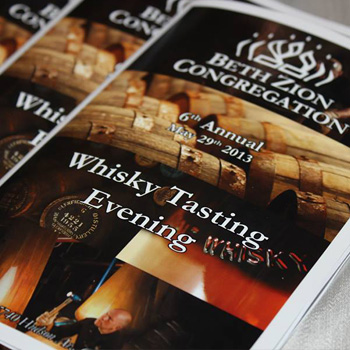
Mar 26, 2014 | Pillar Pesach 2014
For years I have advocated that synagogue life is not just about praying on the High Holidays or Shabbat. Nor is it about honoring our loved ones on the anniversary of their yahrzeit. It’s about family, about community and having fun as well.
I was introduced to whisky more than 20 years ago when I was asked to join the Men’s Club Kiddush club. It took me a while to appreciate the differences in the different blend being offered but a year or two later I was introduced to the single malt whisky (a blended whisky is produced from whisky from 2 or more different distilleries whereas a single male is from one distillery). That began my personal journey into the world of Scotch whisky (there are many types of whiskies – this article refers to whisky made from barley and when referring to Scotch, it means whisky made in Scotland only; the equivalent of Scotch produced in other countries is simply referred to as “whisky” or “whiskey”).
Because so many congregants enjoyed Scotch, several members organized a fundraiser many years ago. That was my first “tasting” event and we have continued to grow and expand our efforts. I assumed the chairmanship of this committee a couple of years later and what our committee decided to do was to create a uniqueness by having as many different bottles as possible. Subsequently, I attended a tasting in New York City called Whisky Fest. For 4 hours I was offered as much as I could drink from a choice of 300-350 different distilleries. I was in heaven. The following year 3 other members joined me for the best “shul” experience of my life.
Whisky Fest taught me how to “taste” the whisky. Our purpose is to share these incredibly different and wonderful expressions of whisky without getting drunk. Each year we offer anyone a ride home (my wife Leah doubles as one of our volunteer pourers and chauffeur). We have only had to drive one person home and that was because he didn’t bring his car and asked for a lift.
Beth Zion continues each year to raise funds for youth programming via our Scotch Tasting evening. We offer a sumptuous buffet, 15 different expressions and a wonderful time. This year our event is on June 12, 2014 and is sponsored by William Grant & Sons, producers of Glenfiddich and The Balvenie.
Why not join us this year and learn how to appreciate and enjoy the taste of Scotch whisky!
Chag Kasher V’Sameach
Allan Schneiderman
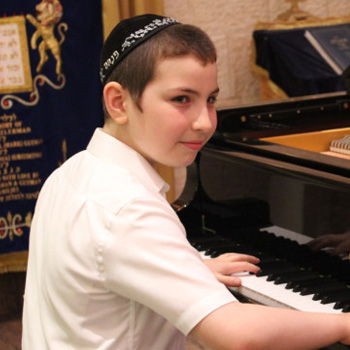
Mar 25, 2014 | Pillar Pesach 2014
Last year’s Concert was performed with great artistic flair and flavor as we were entertained by Pinchas Avital, a child prodigy pianist, Danny Benlolo, Aaron Bensoussan, Yossi Pomerantz and Shmuel Levin ( and Louis Armstrong ) These great musicians were accompanied by Yossi Milo and orchestra. A most special thank you goes to the Rossdeutscher Families for generously sponsoring the concert and helping to make it a reality. A special thank you to the evenings’ cocktail sponsors and last but not least, Committee Chairman Joe Presser, Rabbi Shoham, Mark Litvack and Committee for bringing the concert to fruition.
SAVE THE DATE: “From Bible to Broadway”
Tuesday, September 30th, 7:30 pm
Join us and be a part of this years’ musical extravaganza where you will once again be a part of the BZ Cantorial experience, featuring new repetoires, new entertainers, a collaboration of some of the best Chazzanim and classical, jazz, contemporary and popular music to ever hit the stage.
Beth Zion’s “on your feet” evening will be another spectacular evening of celebration through music and song with very special appearances, by world renowned artists. Chairman Joe Presser and Rabbi Sidney Shoham will once again lead us to an evening of enormous success and unparalleled entertainment . See you at this year’s concert
Ricky Steinberg
President
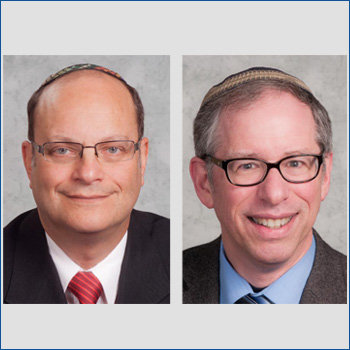
Mar 22, 2014 | Pillar Pesach 2014
Your Religious Committee is hard at work bringing religious programming to our shul. Our successes may be measured by our weekly shiurim with diverse topics that will interest every literary taste. They include classes given by David Amsel right after our Rinat Yisrael minyan Shabbat morning services Rabbi Michael Wolff on various Mishna Brura topics each Shabbat afternoon before Mincha, Rabbi Ze’ev Binder each Monday evening on Gemara Tractate Shabbat, as well as Rabbi Yitzchak Gimple each Wednesday night on Aruch Hashulchan, dealing with Jewish jurisprudence. Our Daf Yomi class, dedicated in memory of Yechiel Glustein is given daily by two of our talented volunteers, Elliott Silverman and Yehuda Kops. Please come as often as you can and enjoy these wonderful year-long classes, geared to accommodate every intellectual level.
We have scheduled several events in the next few months which we are certain you will find of interest:
Beth Zion is pleased to present our Yom Ha’atzmaut Shabbaton lecture series featuring Rabbi Yehoshua Grunstein. Rabbi Grunstein has been in our shul several times, inspiring us with his wide-ranging knowledge and his ever-present smile. His topics for this weekend will include ‘The Jewish claim to Jerusalem and the Land of Israel’, as well as other enlightening Israeli current events.
This year, we are most fortunate to welcome Dr. Lawrence Schiffman, who hails from New York City as our Shavuot Scholar-In-Residence. This is one of our shul’s oldest and most successful programs. Dr. Sciffman is indeed a scholar of note, who specializes in the Dead Sea Scrolls and the history of Jewish law & Talmudic history. His knowledge is however not restricted to these topics and we have chosen several topics from his wide repertoire, which we believe will tickle your intellectual curiosity as you find him interesting, informative as well as mind-stimulating. The Yom Tov climaxes with his keynote lecture which he will deliver during the second day of Shavuot Luncheon.
Our next focus is Tisha B’Av, for which we are on record as having the most appropriate program in the city. As the other synagogues do, we show the Chafetz Chaim Heritage movie, but what makes us unique is our Annual Tisha B’Av Holocaust Survivor Lecture that features an actual survivor, relating his/her personal experiences during that horrific time in our nation’s history. This program has been widely accepted and each year the attendance grows.
Back by popular demand, we have secured Cantor Yechezkel Klang from Israel to lead our High Holiday Main service in The Rabbi Sidney Shoham Sanctuary. As well, we have our “shtibel-style” Rinat Yisrael second minyan for our members who prefer a more European type of service that will take place in the Albert Spector Auditorium.
Stay tuned for further programs as we bring them to fruition.
Finally, let us take this opportunity to wish you and your family a Happy and healthy Pesach.
David Ronis & Zigui Levkovic












